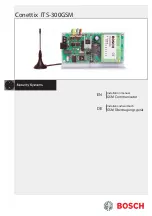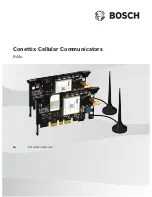
hwc_glossary.fm
A31003-W1040-U101-1-7619, July 2006 DRAFT
HiPath Wireless Controller, Access Points and Convergence Software V4.0, C10/C100/C1000 User Guide
271
Glossary
Networking terms and abbreviations
EAP-TLS
EAP-TTLS
EAP-TLS Extensible Authentication Protocol - Transport Layer
Security. A general protocol for authentication that also supports
multiple authentication methods, such as token cards, Kerberos, one-
time passwords, certificates, public key authentication and smart
cards. IEEE 802.1x specifies how EAP should be encapsulated in LAN
frames.
In wireless communications using EAP, a user requests connection to
a WLAN through an access point, which then requests the identity of
the user and transmits that identity to an authentication server such as
RADIUS. The server asks the access point for proof of identity, which
the access point gets from the user and then sends back to the server
to complete the authentication.
EAP-TLS provides for certificate-based and mutual authentication of
the client and the network. It relies on client-side and server-side
certificates to perform authentication and can be used to dynamically
generate user-based and session-based WEP keys.
EAP-TTLS (Tunneled Transport Layer Security) is an extension of
EAP-TLS to provide certificate-based, mutual authentication of the
client and network through an encrypted tunnel, as well as to generate
dynamic, per-user, per-session WEP keys. Unlike EAP-TLS, EAP-
TTLS requires only server-side certificates.
(
See also
PEAP)
ELA (OPSEC)
Event Logging API (Application Program Interface) for OPSEC, a
module in Check Point used to enable third-party applications to log
events into the Check Point VPN-1/FireWall-1 management system.
Encapsulation
See
tunnelling.
ESS
Extended Service Set (ESS). Several Basic Service Sets (BSSs) can
be joined together to form one logical WLAN segment, referred to as
an extended service set (ESS). The SSID is used to identify the ESS.
(
See
BSS and SSID.)
FHSS
Frequency-Hopping Spread Spectrum. A transmission technology
used in Local Area Wireless Network (LAWN) transmissions where the
data signal is modulated with a narrowband carrier signal that "hops"
in a random but predictable sequence from frequency to frequency as
a function of time over a wide band of frequencies. This technique
reduces interference. If synchronized properly, a single logical channel
is maintained. (Compare DSSS)
Term
Explanation
Table 19
















































